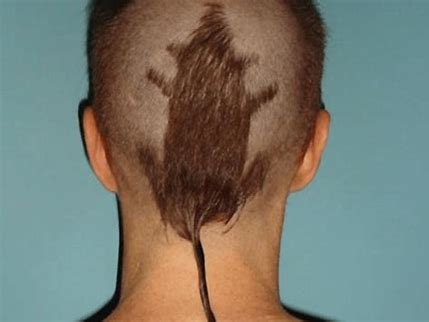The Rat Tail haircut, often viewed as a contentious and divisive style choice, possesses a deep-seated history and cultural importance spanning various societies and generations.
Recognized by its elongated, slender strand of hair at the back of the head, this hairstyle has elicited both ridicule and admiration, symbolizing rebellion, self-expression, and cultural identity.

Origins and Development
The exact origins of the Rat Tail remain somewhat unclear, though it’s thought to have diverse cultural roots.
Some attribute its emergence to Native American communities, while others connect it with the Polynesian diaspora.
Where it served as a significant link to ancestry and a rite of passage among young males.
Contrary to popular belief, it is distinct from the traditional Chinese queue hairstyle, despite visual similarities.
The Rat Tail gained prominence within Western culture during the 1980s, particularly within the punk movement.
This period saw the rise of unconventional hairstyles like the mullet, and the Rat Tail emerged as a more rebellious alternative.
Beyond merely a fashion statement, it represented defiance and individualism, often complemented by attire such as leather jackets, ripped jeans, and politically charged slogans.
Cultural Importance
Throughout its existence, the Rat Tail has transcended mere aesthetics to become a cultural emblem.
In Filipino culture, for instance, it symbolizes resilience and masculinity, particularly among combatants who use it to embrace their heritage.
Similarly, within the Star Wars universe, the Padawan braid, akin to a Rat Tail, denotes the rank and progression of a Jedi apprentice.
Reception and Interpretation
The Rat Tail has faced its fair share of criticism, often being labeled one of the worst hairstyles due to its unconventional appearance.
Nonetheless, it has experienced a resurgence in popularity, with contemporary iterations blending it seamlessly into modern styles, incorporating features like vibrant colors, fringe, and braids.
This revival reflects a broader trend of revisiting retro aesthetics and reimagining them for a new audience.
Also Read: Ugliest Phone: Sharp Aquos R2 Compact A Mixed Bag of Reviews
Contemporary Variations
Present-day Rat Tails often present a more integrated look, with the strand harmoniously blending into the overall hairstyle.
Stylists may introduce texture, hues, or multiple tails to craft a distinctive and personalized expression.
Today’s Rat Tail focuses less on shock value and more on showcasing individual identity and creativity.
Conclusion
The Rat Tail hairstyle epitomizes the cyclical nature of fashion and humanity’s enduring quest for self-expression.
From its countercultural origins to its contemporary adaptations, the Rat Tail continues to evolve.
Challenging conventional standards of beauty and inviting individuals to redefine notions of style.
Whether embraced or disparaged, the Rat Tail remains a symbol of personal freedom and the indomitable spirit of human expression.